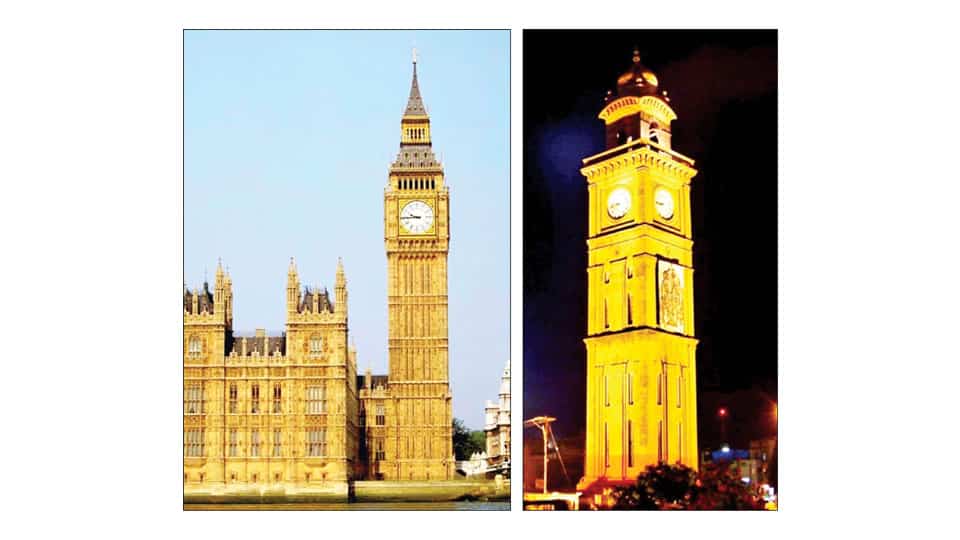By Dr. K. Javeed Nayeem
The first part of the title of this article, as is most certainly known to almost all my readers, is actually the title of a very famous historical novel penned by Charles Dickens, published in the year 1859, set in London and Paris, before and during the French Revolution which came to be known as ‘The Reign of Terror.’
It tells a very poignant story of love, sacrifice and redemption, against the backdrop of the turbulent historical events of the time. It focuses on two look-alike characters who are both in love with the same woman. While one marries her, the other, in the true style of a true and selfless lover, eventually gives his life to save her husband’s life years later.
In a most absorbing narration, the tragic story explores the themes of sacrificial love, revenge and forgiveness. But mind you, the similarity in the title of what Dickens has written then and what I am writing now, a full hundred and sixty years later, ends here! The times and things he has written about then and the times and things I am writing about now, are completely unrelated although not dissimilar.
I am only using his title for impact, secure in the knowledge that with Dickens long gone, I would certainly be safe from any legal hurdles or consequences, of the kind that such acts are prone to attract!
The times then were turbulent in France and the times now too are indeed very turbulent, across the entire world. Exactly like actors on stage in a play, as completely helpless inhabitants of this earth, destined to live here and share our living space, just for what you can call the ‘blinking of an eye’ in a historical time-frame, we can only hope and pray that we have the good sense to strive for it and hope against hope that elusive peace, will eventually prevail!
It is perhaps for times like these that the Persian Sufi poet, Rumi has said: “Since life itself is as brief as a half-taken breath, let’s preach only love!” Yes, there’s just no time for any other kind of preaching.
It is very interesting and pertinent to note that Dickens opens his novel with a sentence that has become very famous and iconic: ‘It was the best of times, it was the worst of times, it was the age of wisdom, it was the age of foolishness, it was the epoch of belief, it was the epoch of incredulity, it was the season of Light, it was the season of Darkness, it was the spring of hope, it was the winter of despair, we had everything before us, we had nothing before us, we were all going direct to Heaven, we were all going direct the other way —in short, the period was so far like the present period, that some of its noisiest authorities insisted on its being received, for good or for evil, in the superlative degree of comparison only.’
Why I have chosen to render this certainly very long sentence in full here, is only because I want the impact of his words to inspire the people of our time, especially the youngsters, who have not yet read Dickens, to read his works and relish what can be called very delightful reading. Although enjoying reading, which is often considered laborious, certainly is an acquired taste, they will most certainly acquire it and enjoy it too, for the rest of their lifetimes, if only they go along with a little perseverance. After that, believe me, it is bound to be a roller-coaster ride!
And, to make this process easier and less painful, they can always start by reading the easily available and much abridged and simplified versions of the classics, which would otherwise seem very daunting. That is exactly what I did as a fledgeling reader. The two cities that I am writing about today are faraway London and our own Mysuru and the only two things I am talking of are the two iconic clocks that have been standing in their respective places over the ages.
Starting with London, The Big Ben that stands there, is undisputably the most iconic and most well-known clock in the world. It has been marking the passage of time since the year 1859, which by a quirky coincidence, was the year Dickens penned his magnum opus!
Strictly speaking, the name Big Ben, refers only to the actual bronze bell weighing 15.1 tons that peals every hour, but it is commonly associated with the whole clock tower at the northern end of the Houses of Parliament. The tower itself was formally known as St. Stephen’s Tower until 2012, when it was renamed Elizabeth Tower on the occasion of Queen Elizabeth II’s Diamond Jubilee celebrating 60 years on the British throne.
Here too in the heart of Mysuru we have our most iconic clock tower that has been marking the passage of time, albeit with a few pauses from time to time, since the year 1927 when it was erected to mark the Silver Jubilee of the rule of one of our most illustrious Maharajas, H.H. Sri Krishnaraja Wadiyar IV. There’s nothing dishonourable that there were a few pauses in its ticking because like any other man-made machine, it needed periodic attention to keep it ticking.
And this resting and restoration period is exactly what it is going through right now. A Detailed Project Report (DPR) for the restoration of the clock tower had been prepared by the Department of Archaeology, Museums and Heritage while the Mysuru City Corporation (MCC) will take up the work at a cost of Rs. 41 lakh under the supervision of members of the Mysuru District Heritage Conservation Committee. The imposing, 75-feet-tall structure, overlooking the equally imposing Rangacharlu Memorial Town Hall, had developed cracks in the dome while some of the decorative features in the canopy atop the structure had fallen off. It appears that the steps inside the structure leading to the dome too have been damaged.
Though the clock was ticking and telling us all the correct time, the bell of French origin, had fallen silent since the last 20 years. It is not very clear whether it stopped striking on its own or was silenced to prevent further damage to the ageing tower but its restoration too is on the cards. But the experts still seem to be in some confusion whether its loud booming peal and the consequent hourly vibration, will start damaging the tower once again.
So, some citizens are now of the opinion that to avoid this possibility, the bell should only be retained in its present lofty perch just for ornamentation and the business of proclaiming the passage of the hours should be done by some kind of an electronic device, through a loudspeaker. Others feel that we can do without this gross ignominy and leave the clock to stand silently, retaining its past glory and dignity but still doing its duty of showing us the time.
I’m not very sure which side of the fence I should stand on in this matter, because getting over this quandary is a challenge best left to the experts. But like the many old-timer Mysureans I recall that the magical sound of the bell would reach as far as five to six kilometres away.
It is a different matter that with the passage of time, the sound of the bell got drowned in the sound of automobiles and other noises that gradually became all pervasive across our fast-growing city.
Now whether we give it an electronic voice or retain its original source of sound, while we should all feel happy that this ‘time keeper’ of our beautiful city, that has been telling us the correct time, from the time when not many people in the city had wrist watches or clocks at home, we should certainly not allow it to fall silent!
e-mail: [email protected]








Recent Comments